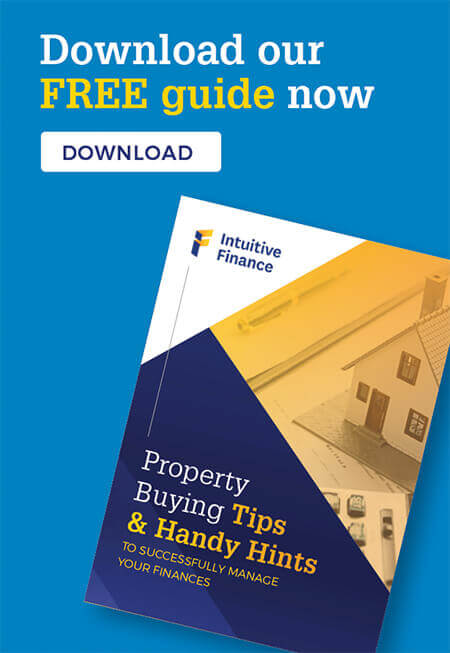You’ve found your perfect next property and you know opportunities like this don’t come around that often. Unfortunately, so does everyone else and the chances are if your eyes on it, someone else is probably looking at it too. Securing the dream home is all about acting fast and this means you don’t always have the time to sell the home you’re currently living in, in fact you hardly ever will. This is where bridging finance can be extremely useful. Whether you’re upgrading or downgrading, bridging finance can offer solutions to juggling the pressure of multiple mortgages.
What is Bridging Finance?
A bridging loan bridges the gap between securing a mortgage for a new property before an existing property is sold. They offer short-term access to funds at a sometimes higher rate of interest or more likely, just at the standard variable rate, with no discounts applied.
Your credit history will go a long way when it comes to securing a bridging loan with your lender but there are a number of other factors that will affect approval. These factors include the risk associated with the loan, the value of the property you currently own, the amount of the one you’ll be purchasing and the amount of time the loan needs.
Who Benefits from a Bridging Loan?

Bridging Loans are well-suited to people looking to purchase a new property before selling their existing one. Due to the risks associated with this type of loan, you should only be considering bridging finance if you’re an asset-rich borrower who’s after hassle-free lending for a residential property. If you don’t have sufficient funding or security, then you may find yourself paying far more in the bridging period than you can actually afford.
How to Make Repayments

A typical bridging loan extends for a period of somewhere between six and twelve months if required. The most common term, however, is the difference between the settlement of the purchase and then the receipt of the sale property proceeds. We have seen these range from 7 days to 9 months depending on the client and the property(s).
After you’ve sold your existing property, these funds will be used to repay your bridging loan. Before this sale takes place, your minimum repayments will usually include only the interest. So while this makes it easier for you to balance paying off two mortgages, it also means that for the period of the bridging loan you won’t be making a dent into your principal debt and will therefore be paying even more interest in the long run.
The best way to avoid a massive debt at the end of this period, is to make any extra repayments where you possibly can. This means that the amount added to the loan of your new property will be reduced by what you’ve already paid during the bridging period.
In some circumstances, the loan interest can even be capitalised thereby meaning your cash flow costs are reduced during the period. However, buyer beware, these costs then add to your loan principal and you can end up with a higher “end debt” than you first thought or had accounted for.
Advantages

Avoid the hassle of moving multiple times.
Taking out bridging finance means you don’t have to find another place to live in between selling your home and moving into the next one. Some people opt for selling their existing home and finding a short-term rental property as they look for their new home. This means that in the space of six months they could be moving twice. A bridging loan will give you access to funds for a new home before selling the existing one. This way you avoid the hassle of moving more than once.
Manage two mortgages with interest-only repayments.
Under the bridging loan you will not be required to make full repayments on both of your mortgages. Instead, you’ll be paying off the usual repayments on your existing mortgage and only the interest of the bridging loan. It’s far more affordable than trying to make repayments on two separate mortgages.
The loan is temporary.
Although interest rates can be higher, you’ll only be paying this for a short period of time. Most mortgages are geared towards long-term expenditures which means the lenders in these instances will make a large amount of money from you over an extended period of time unlike bridging mortgages. Once your existing home is sold, you can pay off the bridging mortgage completely and get back to making repayments on the mortgage on your new home.
Disadvantages

You need to know how much your existing home will sell for.
When you get bridging finance, you should be able to predict how much your old property will sell for. Often people will think that their property is worth far more than the market is willing to pay and land themselves in hot water when they find they cannot afford to pay off the bridging loan and buy their newer home. If you overestimate the selling price of your existing home, you face being forced to sell for much less or paying more interest as you extend your bridging loan to keep your house on the market waiting for that perfect offer. This can be a risky move especially if that perfect offer never comes along.
The longer you take to sell the more interest you’ll be paying.
If you do not sell your existing home quickly you could be paying the high interest rates of the bridging loan for longer than you expected. With the interest on bridging loans far higher than that of your standard mortgage and extra six months on this loan can really hurt the bank.
So what does bridging finance look like in real life?

For example, if you have a house that is worth $500,000 and a mortgage of $250,000 on this existing property, but you want to buy a new home worth at a cost of $450,000, you have the option of taking out a bridging loan. Your new bridging loan will cover the cost of the $250,000 you have left on your existing mortgage and also the $450,000 for the new purchase. This brings the total loan to $700,000 plus the stamp duties and associated buying costs with a new property. Once you’ve sold your property for the predicted amount – $500,000 – this will be put towards paying off the $700,000 loan plus any incurred interest and less any/all of the associated selling costs such as agents fees, advertising and your legal or conveyancing costs. This reduces your loan to $200,000 (+/- all the associated costs) plus the associated interest. From here you can continue to make loan repayments with your standard mortgage.
Whilst this is a valid option for those looking to buy a new property before selling their existing one, this is a simplified version of how events play out. It is important to accurately estimate how much you can get for your existing property and also have some money in reserve in case you need to pay the interest on the loan longer than you might have first intended.
Every individual is different and sometimes the best way to discover your options are by talking to an expert. If you’re interested in getting the best advice about your property and loan options, get in contact with the experienced team at Intuitive Finance.
Intuitive Finance – the smart choice
The world of banking and finance can be a pretty daunting one for both novice and sophisticated investors and since our establishment in 2002 we’ve focused on providing outstanding service and business standards. This approach was vindicated when we were recently named Victoria’s favourite mortgage broker at the 2015 Investors Choice Awards. For expert advice on lenders mortgage insurance, contact Intuitive Finance.
The information provided in this article is general in nature and does not constitute personal financial advice. The information has been prepared without taking into account your personal objectives, financial situation or needs. Before acting on any information you should consider the appropriateness of the information with regard to your objectives, financial situation and needs.
- Timing the Market vs. Time in the Market - July 15, 2024
- On Market vs. Off Market Listings: What’s The Difference - June 17, 2024
- Impact of Victoria’s Land Tax Hike on Property Investors - June 3, 2024









